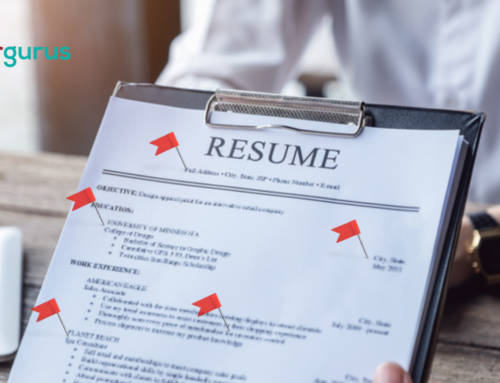The last two years have been a game changer for HR functions and business leaders worldwide. The COVID-19 pandemic has significantly impacted how we work and coupled with this; we have a global skills shortage that is driving new developments in the HR space. So what are the latest trends that everyone needs to know about? This blog will outline our top 5!
Trend 1: Hybrid work is driving business transformation
According to Gartner, a vast majority of HR leaders (95%) predicted that a proportion of their employees would expect to continue to work remotely after the pandemic. At HR Gurus, we have one hundred per cent seen this trend play out in Australian workplaces. But many business leaders seem worried about how this shift will impact their organisational culture.
Many businesses are asking themselves the following questions:
- Will our culture suffer in this virtual first or hybrid working environment?
- How do we maintain our cultural values if our employees do not work consistently in the same location?
- What can we do to ensure we continue to engage with our people in a meaningful way in a hybrid world?
Despite the fears of business leaders, much of the latest research supports the fact that overwhelmingly employees see the move to flexible work as a positive.
According to Webex, Hybrid Work is a flexible work model that supports a blend of in-office, remote and on-the-go workers. It offers employees the autonomy to work wherever and however they are most productive.
What is evident is this shift is already driving transformation and that all businesses need to be ready to support it.
Trend 2: The skills gap is real and is already hurting businesses
According to Mc Kinsey, 87% of organisations are aware they already have a skills gap or will have one in the next few years. Furthermore, the total number of skills required for a single job is increasing at 6.3% annually, and new skills are replacing old ones. Staggeringly twenty-nine per cent of the skills that were present in an average job posting in 2018 will be obsolete by 2022.
According to In Stride the term “skills gap” refers to the bridge between the skills that companies need from their employees and those that are available from workers. It’s fueled by a combination of factors, including advances of automation, AI and other technologies, and candidates lacking the skills needed to interact with these new tech innovations.
This skills gap and the pace at which technology is evolving will continue to be a massive challenge for businesses in the future years.
Trend 3: Employees should be viewed as your most important customer
According to Hays this new landscape and the skills shortage presents a unique opportunity to redefine the new equation in the world of work. They believe viewing your employees as your most important customer and focusing on not only competitive salary, benefits and upskilling tactics will help you navigate the rocky road ahead. Realistically though this this is just the beginning, and they believe much bigger thinking is required to solve this tricky problem.
Attraction and retention will become a massive priority for businesses as the war for talent heats up. Businesses need to start thinking about the actual value exchange between employees and your organisation. Tailored and individual solutions will be required to retain the best and brightest.
Trend 4: Wages are finally on the rise
Stagnant wage growth has been a hot topic for many years in Australia, but salaries are finally increasing quickly. This is mainly being driven by the skills shortages but inflation is also driving baseline wage growth.
The Guardian recently reported that “Australia’s wages rose at their fastest rate in almost eight years but still less than half the headline inflation rate, a record gap likely to fuel calls at next month’s jobs summit for more steps to halt the decline in real household incomes.”
According to Seek, people who are unhappy with their salaries are the most likely to be searching for a new job that pays more. This is in fact, the number one reason people are leaving jobs in droves. Businesses will have to look at how they are renumerating their employees and think about total package and benefits exchanges to combat wage competition.
Trend 5: Mental health issues and psychological risks are the new silent threat to businesses
Many employees are still reeling from 2 years of lockdowns and how their employers treated them during this time. Mental illness is on the rise, and in our recent article on managing psychological risks, we reported some alarming stats including that:
- 1 in 5 people take time off work due to mental health, and;
- 92% of employees feel that mental health first aid and response is a very important issue.
Most alarming was the fact that a whopping 48% of employees feel their workplace is a mentally unsafe place to work.
This is a literal minefield for all businesses big and small, to learn how to combat this massive issue check out our article for some do’s and don’ts or reach out to us.
The low down
There are many external factors putting pressure on businesses globally. If you are looking for support or advice on tackling any of these issues, then please reach out, and we can help you.
Written by Head Guru – Emily Jaksch
Continue Reading
Get a personal consultation.
Call us today at 1300 959 560.
Here in HR Gurus. We make HR simple because it should be.





